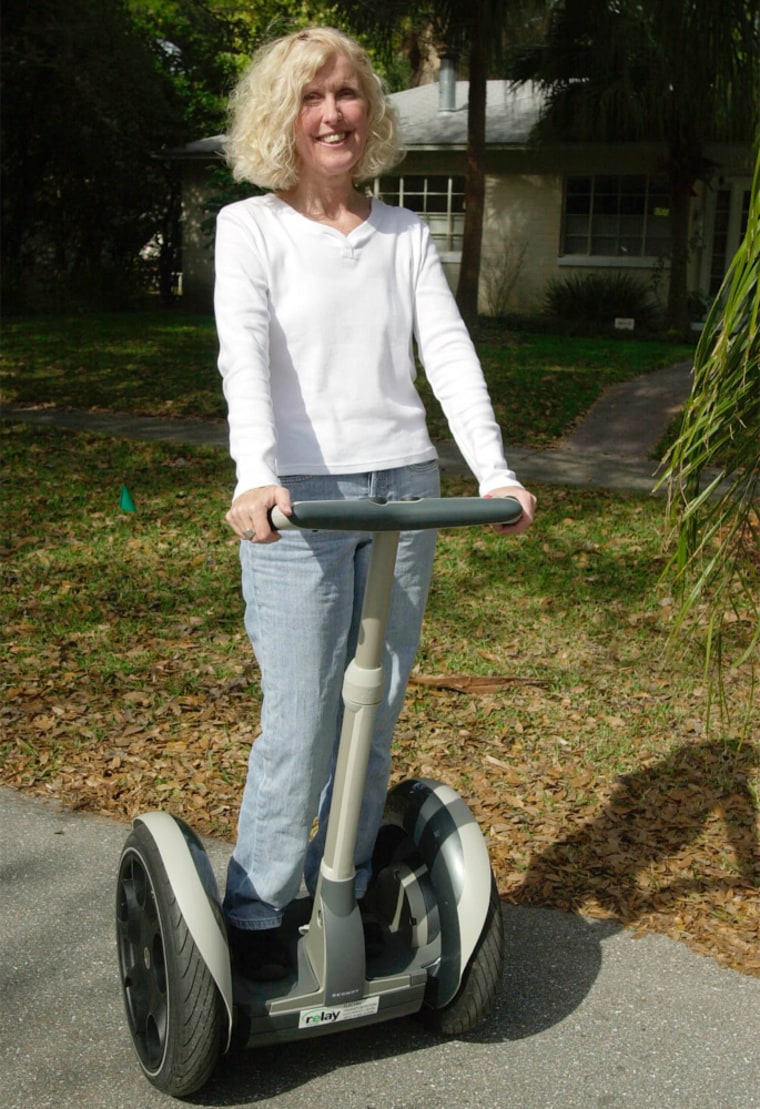The last time Doug Exum went to Walt Disney World, he rented an electric scooter to navigate the resort's four theme parks. But he tired of sitting and the scooter cost him $200.
The next time the 42-year-old computer programmer from Plano, Texas, returns, he wants to bring his Segway, which allows him to stand up as he scoots about on its platform and battery-operated two wheels.
There's only one problem: Disney World doesn't allow visitors, even those with disabilities like Exum, to use the self-balancing transportation machines. The policy has angered some Segway owners with disabilities and surprised others since the Disney parks have a reputation for accommodating the disabled.
They say even some Disney employees use Segways, which are becoming increasingly popular with people who otherwise would have to use wheelchairs.
"I'm not prepared to let a corporate attorney dictate to me how I should be mobile," said Exum, who is technically quadriplegic from an injury as a teenager but functions as a paraplegic.
Disney World doesn't allow the Segways into the parks because they haven't been approved by the Food and Drug Administration as medical devices, said park spokeswoman Jacquee Polak.
"Basically, it's difficult to accommodate two-wheeled vehicles," she said.
'It's an insult'
Disney World traditionally has been very sensitive to the needs of the disabled. The resort has wheelchair-friendly swimming pools, audio devices for the visually impaired and a hot line for people with disabilities to call for information. People with walking problems can use wheelchairs or scooters in the park.
But Meredy Jenkins, a 55-year-old graphic designer in Orlando who has multiple sclerosis, said many people don't want to use wheelchairs or scooters because they have to sit.
"They want you to sit in a wheelchair and feel even more handicapped," Jenkins said. "Most people I know aren't ready to sit down. It's an insult."
Disney's policy has earned some caustic comments on a Segway online discussion forum. A writer known as "Okeechobee Wind," who described recently being refused entrance to Epcot on a Segway, plans to spend less money at the resort because of the policy.
"There are times when confrontation causes the pixie dust to not do its magic while at Disney," wrote Okeechobee Wind, who did not respond to an interview request.
Disney World isn't the only place to restrict the use of Segways. They're also prohibited at Disney's California parks _ Disneyland and California Adventure. Sea World Orlando says it doesn't allow them for safety reasons and San Francisco last year outlawed them on its sidewalks.
Orlando's other major theme park resort, Universal Orlando, doesn't have a policy. Jerry Miller, a 55-year-old retired state trooper from Indiana who has Parkinson's disease, recently went to Universal on his Segway without any problems.
"If I had to spend all day in a chair at the theme park, I would be a mess," Miller said.
The Segway was built as a pollution-free mode to zip around sidewalks or at businesses. Since they became available to the public in November 2002, they have found a growing niche among people with neurological ailments who find it difficult to walk. Users include people with multiple sclerosis, Parkinson's disease and those with spinal cord injuries.
Standing up
Jerry Kerr, a former builder in St. Louis who became quadriplegic in a diving accident, said people treat him differently when he addresses them face-to-face from his Segway instead of from a wheelchair.
"I don't know how to describe the feeling, when you have resigned yourself to spending the rest of your life in a wheelchair and that whenever you look at someone you're looking at their waist and rear end," Kerr said. "Then, you're having the ability to stand and interact with someone at their level."
The first Segway, also known as Ginger or IT, was unveiled with great fanfare in 2001 by inventor Dean Kamen, who boasted it would displace cars as the transportation choice for urban centers. They travel at about 12 mph and cost under $5,000. The company that makes them has sold more than 6,000.
Segway spokeswoman Carla Vallone said the company did not track how many Segways were sold to people with disabilities, but "we are definitely aware that this is a category that is really interested in Segway." Because they aren't FDA-approved the company cannot market them specifically to the disabled.
Linda Kilb, an attorney with the Disability Rights Education and Defense Fund in Berkeley, Calif., said she knew of no case law involving Segways and disability rights.
Businesses such as Disney World are required to make "reasonable modifications" to their policies for people with disabilities as long as the changes take into account safety issues and do not fundamentally alter the operation of the business, Kilb said.
Exum, though, won't return to Disney World until the resort changes its policy.
"Individuals should have the option to use whatever helps them get around," he said.
